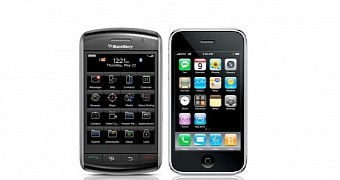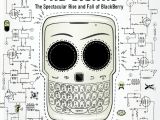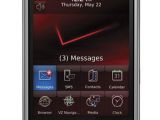Like Nokia once, BlackBerry was also one of the companies that pushed the rise of the mobile market, simply to fade away afterwards. The company is still active on the market, but rumors have been flying around that Microsoft might be interested in acquiring the failing company, just as it did with Nokia.
As we wait for more information on the matter, we’re taking the opportunity to tell you about an upcoming book examining the Canadian company’s rise and fall, called “Losing the Signal.” The Globe and Mail has published some very interesting excerpts that deal specifically with the launch of the Storm handset that was supposed to counter the growing iPhone fixation.
The Storm was doomed from the start
The phone turned out to be a major flop, and the excerpts make it quite clear that BlackBerry knowingly launched a massively flawed device on the market. The alternative of not releasing anything at all was just too gruesome for the company to bear.
BlackBerry initially managed to sell quite a lot of Storm units thanks to its name and Verizon’s aggressive marketing campaign. Big red was ready to provide an alternative to AT&T’s extremely popular iPhone model.
But once the first units of Storm started shipping to consumers, it became clear that the phone was a defective product, so sales quickly declined.
Basically, most of the units sold from Verizon needed to be replaced, and then the replacements started to be returned too. Verizon was furious and asked RIM to pay up to $500 / €458 million to cover carrier losses.
What was wrong with Storm?
Why were customers so unhappy with their Storm handset? Well, for starters, the touchscreen was horribly unreliable. It hovered over a hidden dome to allow digital menus, icons and a keyboard to be poked and clicked, but failed miserably to answer correctly to the inputs.
The thing is, BlackBerry wanted Storm to solve the iPhone’s biggest keyboard problem, the subversive auto-correct function.
BlackBerry’s solution was a glass screen that activated the company’s software only when a user clicked down the screen. But the floating screen was annoyingly unresponsive if users moved away from the center.
RIM also picked a handful of loyal customers to test an early version of Storm and give the company feedback. One of them was the vice-president of mobile development of Morgan Stanley, Alexander Trewby, who confesses that he found the phone quite disquieting.
The first version he got lasted just an hour. The phone got turned off, only never to return again to the land of the living. The replacement didn't fare out better either - it was an automatic fail, from a hardware perspective.
The iPhone was just more intuitive to use, as you just tapped the screen. On the Storm you had to physically press something and then wait for the click. Couple that with the fact that the setup wasn’t actually working, and you’ll understand the frustration.
Reviews of the Storm were caustic enough, and still BlackBerry did everything in its power to cover things up. Helped by Verizon, who started offering the Storm with heavy subsidies, BlackBerry continued to sell units, while its software engineers struggled to fix some of the glitches.
By the end of 2009, BlackBerry’s chief promoter was actually heard saying that the company was producing 250,000 Storms a week just to keep up with demand, calling the phone “an overwhelming success.” When in reality, Storm’s story was a very bleak one.

 14 DAY TRIAL //
14 DAY TRIAL // 

